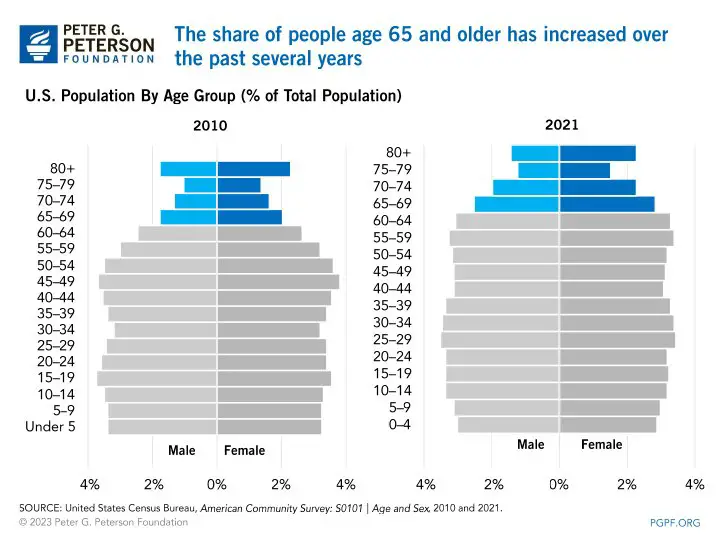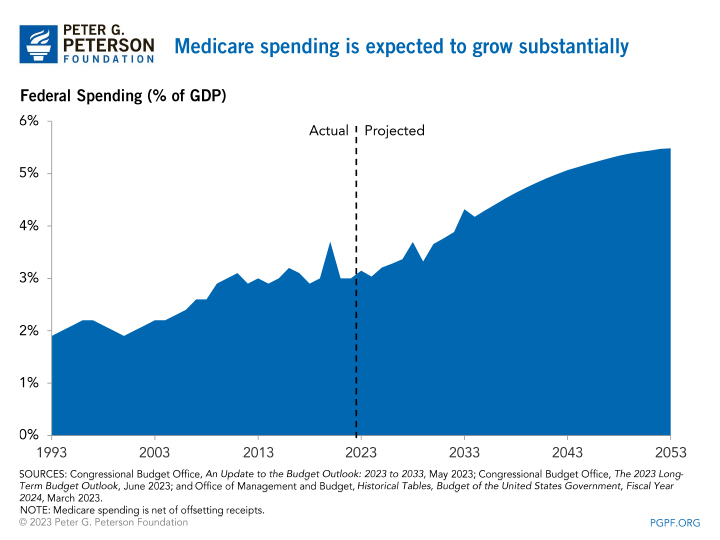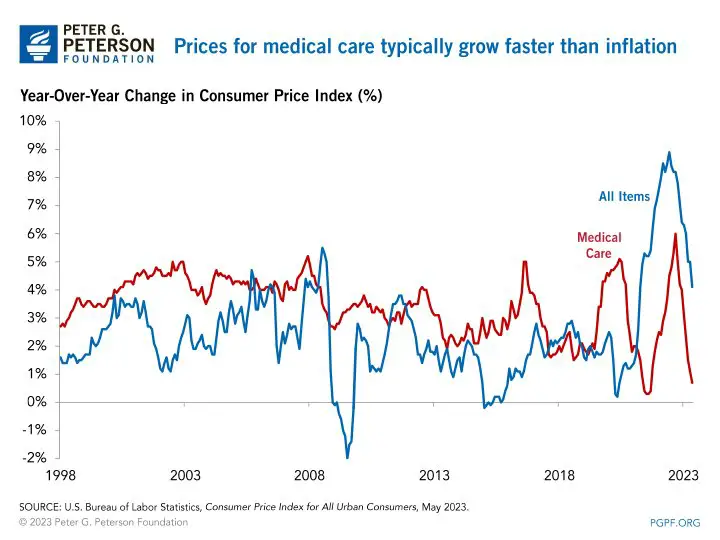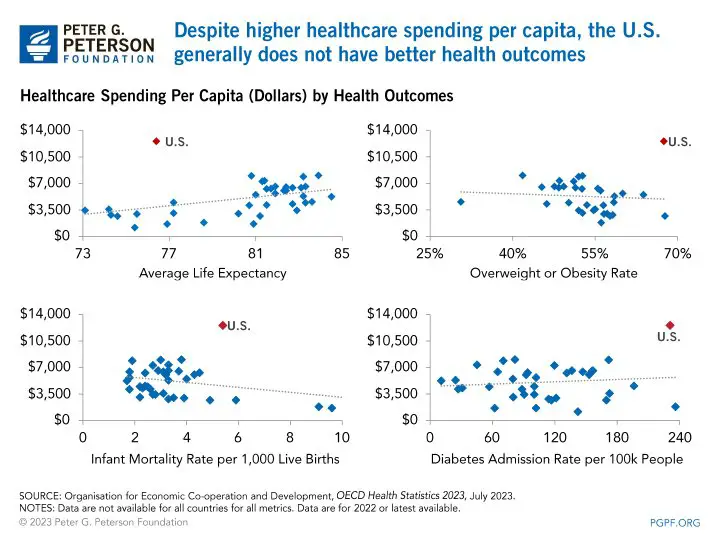
The United States spends significantly more on health care than other nations, but it doesn’t have better health outcomes. Additionally, rising health care spending is a key driver of America’s unsustainable national debt, and high health care costs also make it more difficult to respond to public health crises such as the COVID-19 pandemic. Below is a look at rising health care costs in the US, what’s causing this rapid growth and why it matters to public health and our fiscal outlook.
How much does the US spend on health care?
The United States has one of the highest healthcare costs in the world. In 2021, US health care spending reached $4.3 trillion, averaging about $12,900 per person. By comparison, the average cost of health care per person in other rich countries is only about half that. While the COVID-19 pandemic has exacerbated the rising trend in healthcare costs, healthcare spending has increased long before the onset of COVID-19. Relative to the size of the economy, healthcare costs have increased in recent decades, from 5% of GDP in 1960 to 18% in 2021.

Why is healthcare spending on the rise in the US?
In general, healthcare spending can be viewed as a function of price (dollars charged for healthcare services) and usage (the amount of services used). There are several underlying factors that can increase price and usage, thereby increasing health care spending. The most notable of these factors are an aging population and health care prices.
An aging population
The share of the U.S. population aged 65 and older has increased significantly in recent years, rising from 13% in 2010 to 16% in 2021. Furthermore, that number is expected to continue rising to 20% by 2021. 2030. Because people age 65 and older, on average, spend more on health care than any other age group, growth in the number of older Americans is projected to increase total health care costs over time .

Also, when people turn 65, they will become eligible for Medicare, and the program’s 65 million enrollees in 2022 will grow dramatically. Increased enrollments are expected to significantly increase the cost of Medicare over time. In fact, the Congressional Budget Office projects that Medicare spending will nearly double over the next 30 years as the size of the economy will grow from 3.1% of GDP in 2023 to 5.5% by 2053.

The rising cost of health services
Prices are another significant driver of health care spending in the United States; the cost of health care services typically grows faster than the cost of other goods and services in the economy. Over the past 20 years, the consumer price index (CPI), the average change in the prices paid by urban consumers for various goods and services, has grown by an average of 2.5% per year, while the CPI for medical care grew at an average rate of 3.2 percent annually.

There are many possible reasons for this increase in health care prices:
- The introduction of new and innovative healthcare technology can lead to better and more expensive products and procedures.
- The complexity of the US healthcare system can lead to administrative overhead in insurance and provider payment systems.
- Hospital consolidation can lead to a lack of competition or even a monopoly, providing opportunities for providers to raise prices.
However, more research is needed to confirm why healthcare costs are growing so rapidly.
Why rising healthcare costs matter
It would be one thing if high health care spending led to better health outcomes. However, this is not the case in the US. When evaluating common health care metrics, the United States lags behind other countries despite spending more on such goods and services.

High healthcare costs put pressure on an already tense fiscal situation and are a major factor in the long-term structural imbalance between expenditure and revenue that is embedded in the country’s budget. Containing high healthcare costs is important to the long-term economic and fiscal well-being of our nations. For ideas on how to resolve some of these issues, visit our Solutions page and the Peterson Center on Healthcare.
Related: Infographic: Health Care Spending in the United States
Image credit: photo by Chip Somodevilla/Getty Images
#Americans #pay #health #care
Image Source : www.pgpf.org